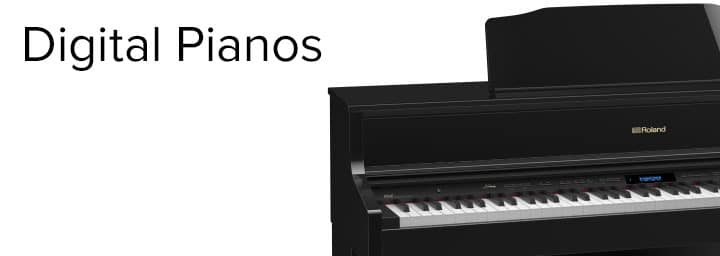While many digital pianos have built-in tools for learning and making music, you can expand your possibilities even further through your PC. A digital piano can be easily connected to your Windows or Mac computer opening up a universe of music education, composition, and recording software to explore.
One of the main reasons you might wish to connect your piano to a computer is to record your performances either for self-evaluation for sharing via social media or for sending to family and friends. When you record yourself playing on a digital piano, you are recording data and not actual sound. There is a big difference and some big benefits! Recording data means all of the actions you make when you play a piece — both key presses and control actions. This data is stored in a format known as SMF which means standard midi file and this data format allows you to do many things that you couldn’t do with a simple audio recording.
For example, if you recorded the right hand part of a piece, you could slow it down while practising the left hand. You could perhaps change the sound if you didn’t like the instrument. If you recorded your piece straight into a PC, you could even edit individual notes. It is worth noting that some pianos give you the option to record your performance as SMF data or audio – useful if you want to transfer it to a PC and email or burn a CD – no need to have dedicated recording software on a PC that will read SMF data.

Contributed by Roland UK
How Do You Connect?
Connecting your piano to a computer is very simple. All you need to send MIDI data from your digital piano to your computer and back again is a USB cable. There are however, two types of USB connector – Type A and Type B. Type A is a “USB to Device,” connector and allows direct connection to a variety of external memory-storage devices such as a USB key. Type B is a “USB to Host,” connector and allows connection to computers. If you plan to use these connections, you need to check the type of USB connections available on the instruments you’re considering. Simply stating “USB” in the specifications doesn’t tell you the type of USB connectivity provided.
Just like a digital camera or printer a digital piano needs a bit of software called a Driver – so you will have to install a driver for your digital piano – all of the major digital piano manufacturers are very good at providing these at no charge. And that’s about it.
Some older digital pianos might not have a USB socket – that doesn’t mean you can’t connect to a computer. Instead of using a USB socket, you can use MIDI sockets. MIDI was originally developed by Roland as a way of connecting two musical instruments together and these MIDI sockets were how you connected them together. Since personal computers don’t have these sockets, connecting a digital piano to a computer requires an adapter like the UM-ONE mk2 that has the MIDI-standard DIN connector on one end, and a computer-friendly connector on the other.
Once you’re connected and you have your digital piano and PC fired up, you’re ready to explore the world of learning, composing and recording!
Subscribe below and receive everything you need to know about starting to play the piano.







